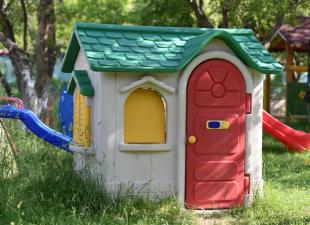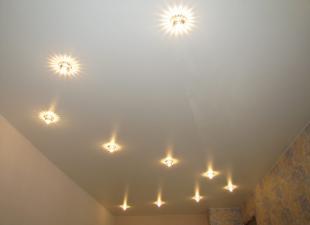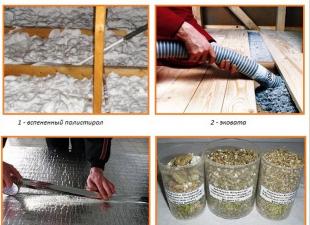Clay is an astringent building material that nature itself gave us. There is no shortage of this material, and most often clay is used for laying a furnace.
In principle, almost any clay can be used for any purpose, the whole point is just how many additional ingredients you have to add and how high-quality the final solution will be.
In general terms, clay is subdivided according to its technological properties
- Bold
- Skinny
- Normal
To determine the quality characteristics of clay, you need to take a small piece of clay, knead it well with your hands, then roll a sausage out of it. Remember as a child ?!

Bend the sausage in an arc and now look carefully. If there are no obvious cracks on the arc, this is normal clay, and if there are a lot of cracks on the prototype, then the clay is thin. And real oily clay is difficult to bend into an arc, it will break.
Oily clay is very good as a waterproofing material, a raw material for pottery. If a masonry or plaster mortar is made from such clay, then when it dries, the surface will be covered with a network of cracks.
Bricks made from this clay will also crack when dried and fired.

To obtain acceptable performance for bricks and masonry mortars, it is necessary to add sand, crushed brick, chalk and other necessary additives in the required proportions to the greasy clay.
Before adding sand to the greasy clay, it must be diluted with water until sour cream is thick.
Lean clay solutions
Mortars on skinny clay (containing a lot of sand) are convenient to work with, however, when dried, they do not have sufficient strength and quickly deteriorate.
To improve such solutions at the stage of preparation, fatty clay is added to them. And if the operating conditions allow, then add cement, lime or soda (liquid) glass.
Normal clay based mortars
The most widely used solutions are based on normal clay. They have the most optimal performance, are comfortable to work with and do not crack when dry.
Determination of the type of solutions
The easiest way to find out what type of clay is being used is to see how the mortar will slide off the trowel.
A mortar cooked in normal clay will slide off it.
The lean clay mortar will simply drain away and the greasy clay will stick to the surface of the trowel.

A more informative (albeit more costly) method is to apply a test solution to the brick surface and then heat it.
After holding at an elevated temperature, the solution with oily clay will crack; with lean clay, the surface will crumble when you slide your finger over it. A mortar prepared with normal clay will have a smooth, firm surface.
This method makes sense to apply when laying stoves. It gives an idea of how the masonry mortar will behave in the future at elevated temperatures.
Clay mortars for oven masonry
If you live near mountainous terrain, it is better to use mountainous sand for masonry. There is an opinion that river sand is a more suitable building material, but this is not so.
The fact is that the grains of river sand are round in shape. Because of this feature, they adhere worse to clay.
Before preparing the solution, sand must be sieved through a sieve, and small pebbles, twigs, plant roots, and so on from the clay must be selected ...
Then the clay should be soaked for about a day in a container with water, so it becomes soft and plastic.

The standard ratio of sand to clay is 1/2. She's part of clay - two parts of sand. But, this ratio can vary depending on the fat content of the clay. The fatter the clay, the more sand you need to add.
And lastly, remember that ready-made clay mortar can only be left under a canopy or roof. It may rain and the solution will wash away.

Financial considerations should not be ignored either. A clay castle made around a house from blue clay purchased from a pharmacy will cost many times the value of the house.
Thus, an optimally selected type of clay solution will reduce costs and ensure the longest operating time.
 parlini.ru Repair of an apartment, a summer residence and a house.
parlini.ru Repair of an apartment, a summer residence and a house.


